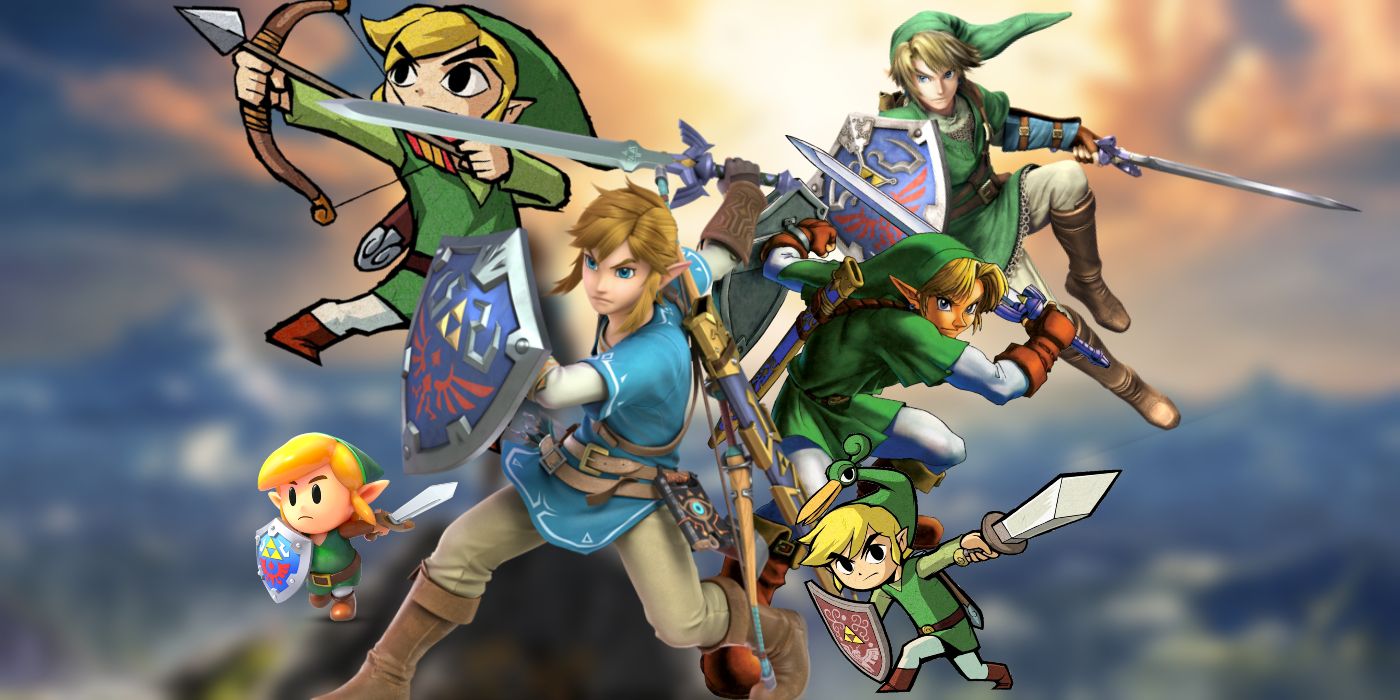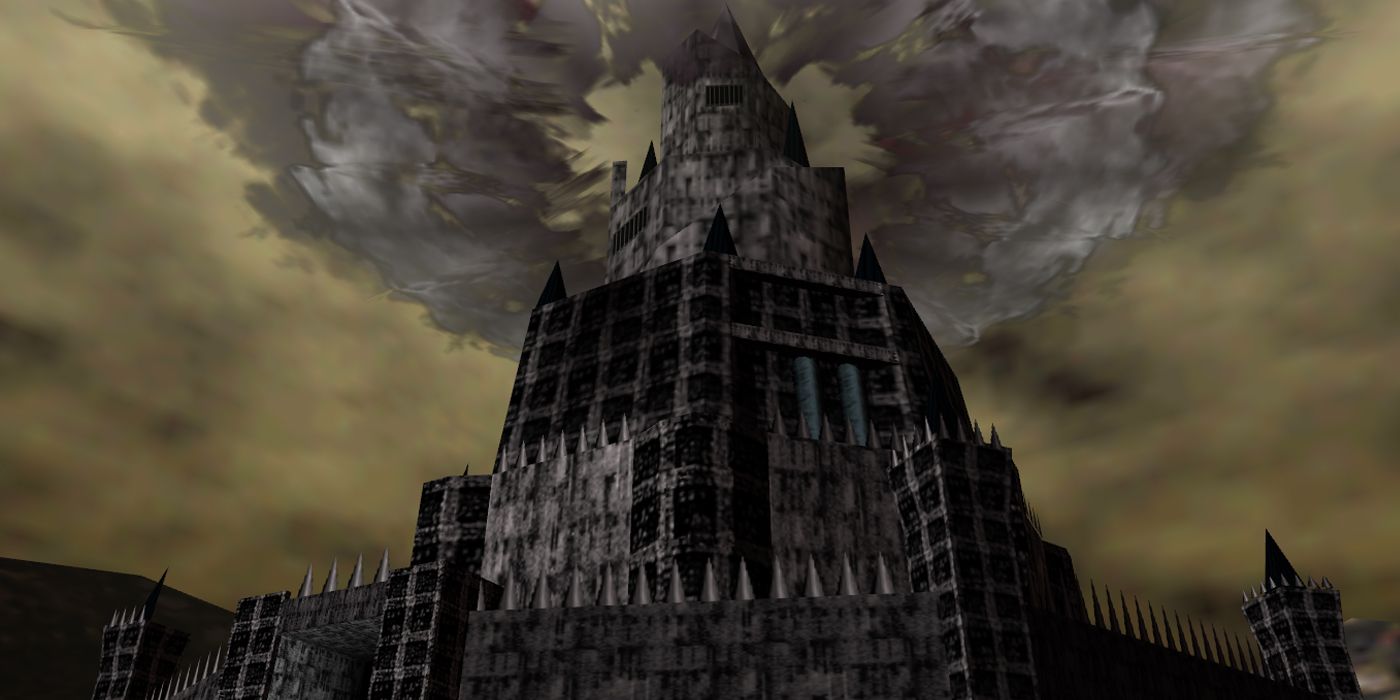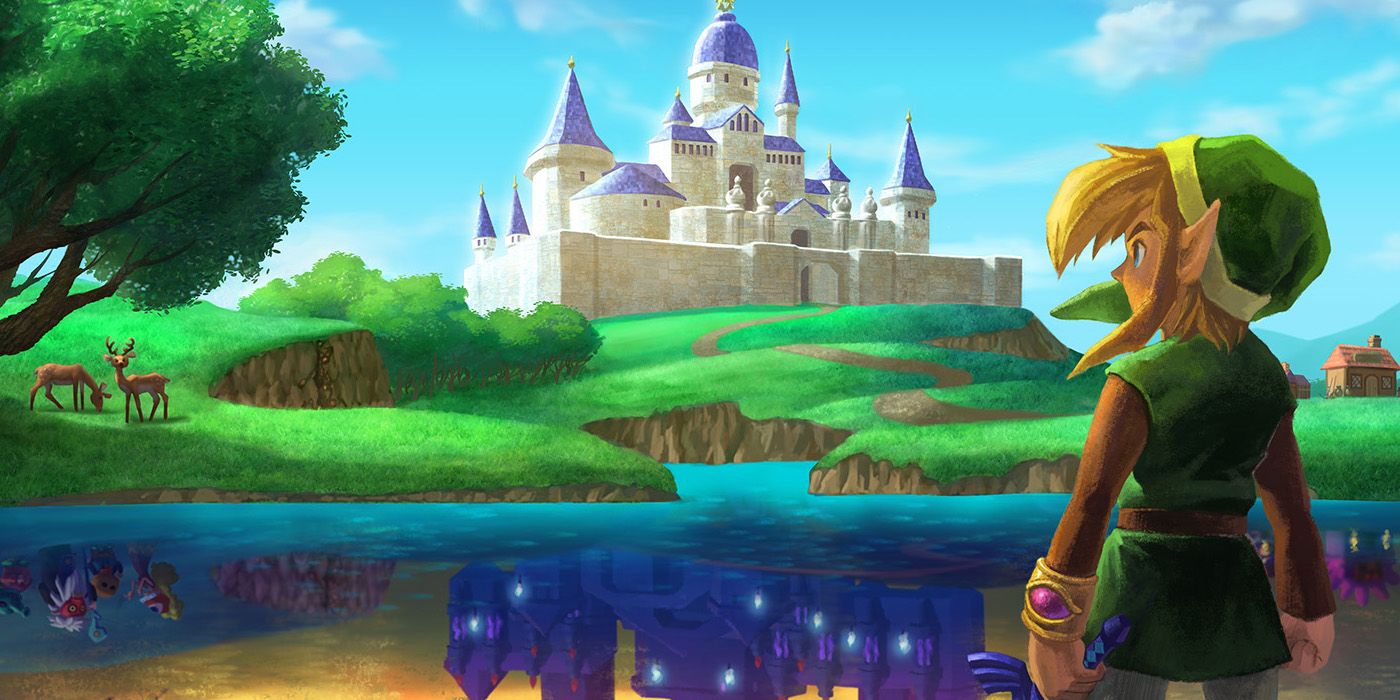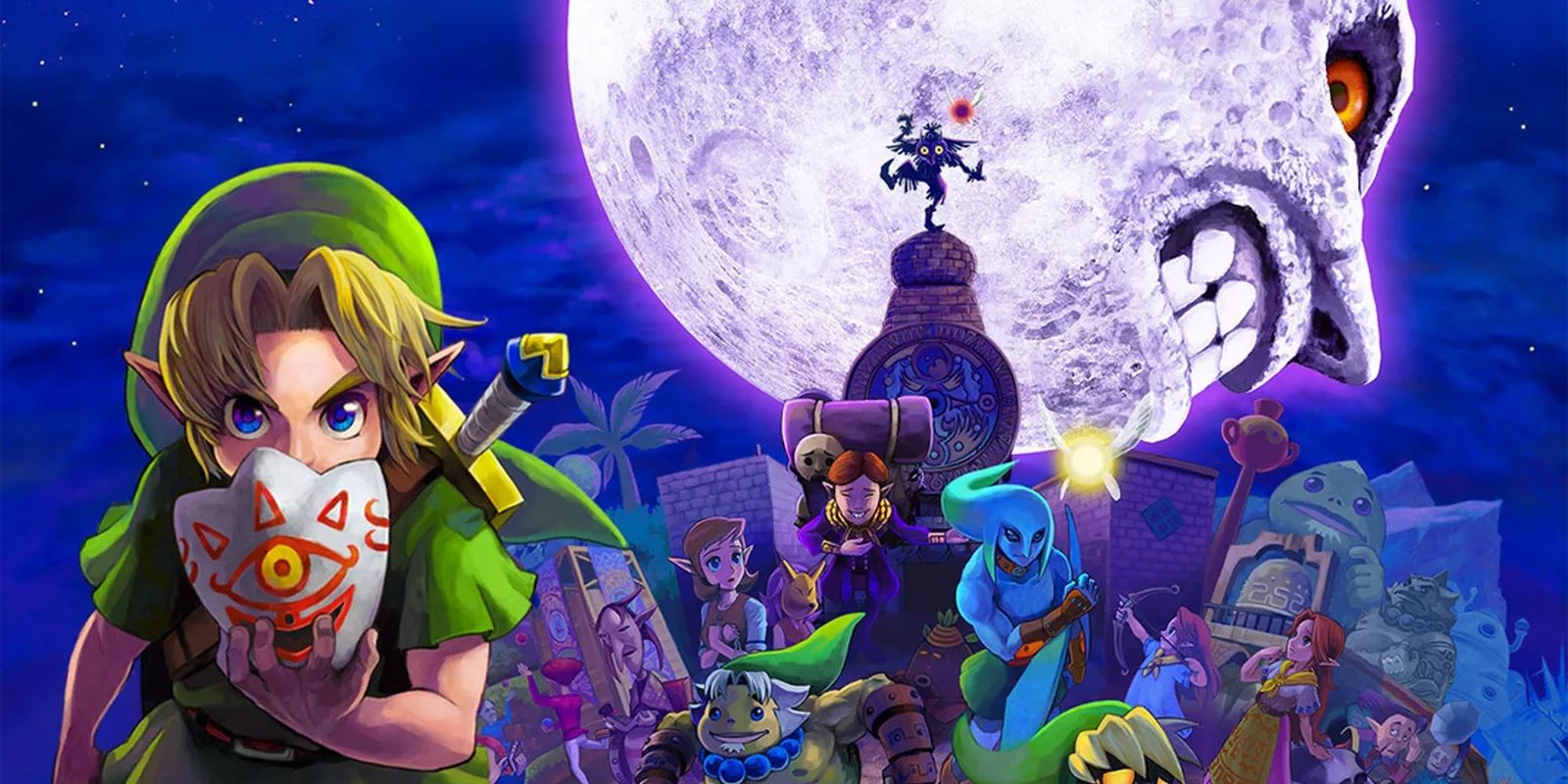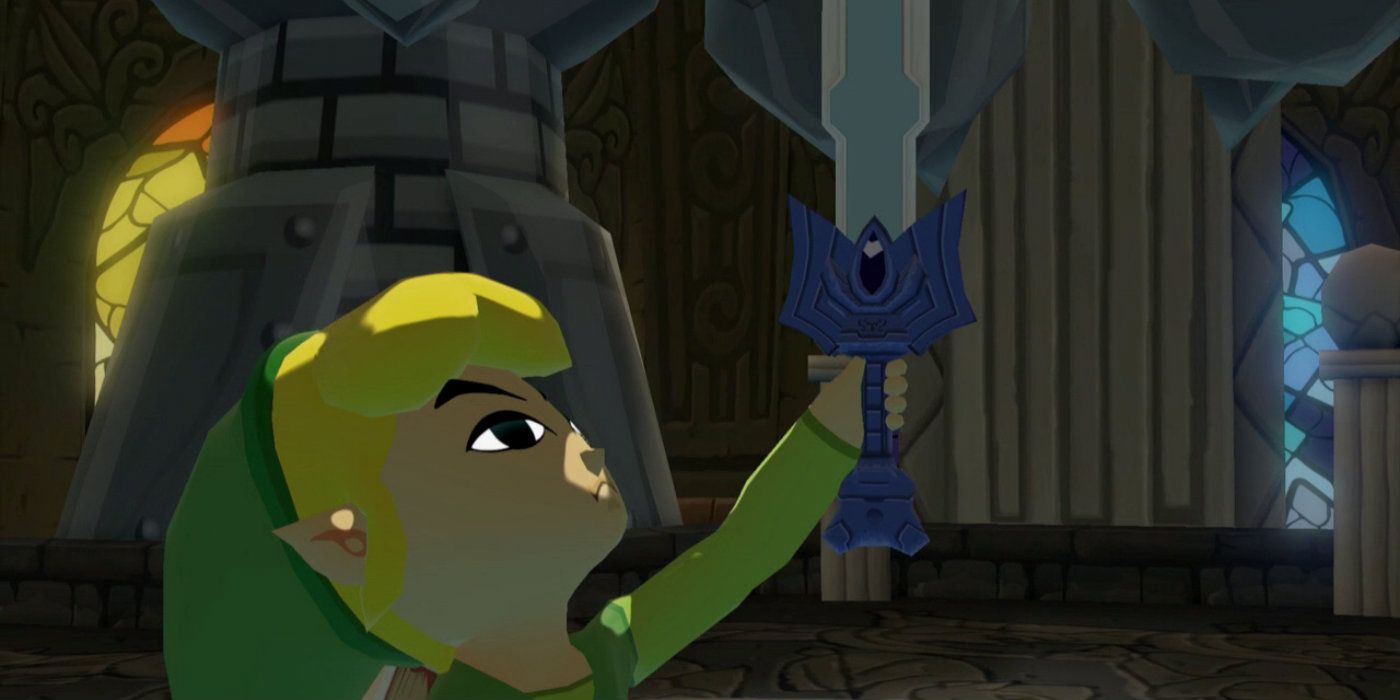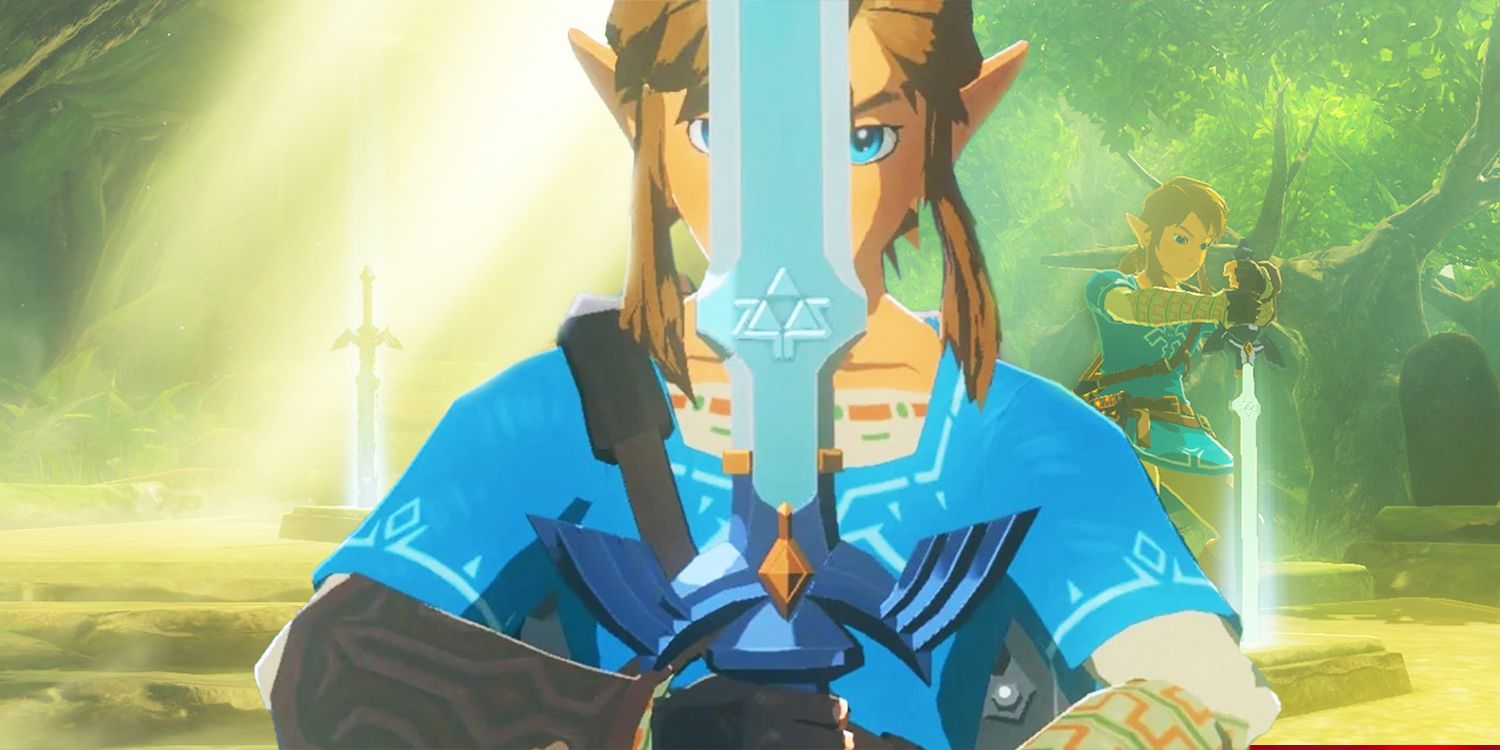Nintendo's The Legend of Zelda is one of the longest-running series in gaming, and it's accumulated quite a complicated in-universe history over the years. Despite each game's perpetual re-telling of similar events (Link beats Ganon with the help of, or in order to save, Zelda), all Legend of Zelda games take place in a connected timeline. Still, it's not quite as simple as placing one after the other, as the timeline splits into multiple paths and follows an occasionally surprising order. Thanks to its complicated chronology, the Zelda series didn't have a public timeline for decades.
Nintendo first published an official Zelda timeline in 2011's Hyrule Historia (which received its first English edition in 2013), 25 years after The Legend of Zelda's 1986 Japanese release (individual games below are listed with their North American release dates). Being the first non-sequel Zelda game to release since Hyrule Historia, much speculation was had about where Breath of the Wild fit in the timeline, and Nintendo finally revealed Breath of the Wild's timeline placement in mid-2018. The resulting chronology is a mess of events, names, and branches, confounded by reincarnations, a timeline split, and a timeline convergence. Here's each part of the Zelda series timeline, as told by Hyrule Historia, The Legend of Zelda: Encyclopedia, and the games themselves.
Legend Of Zelda Timeline: Creation & Division
At the Zelda timeline's very beginning, three goddesses - Din, Nayru, and Farore - descend from the heavens and create the world. They leave behind the Triforce, an artifact that can grant a mortal being's wishes. Another goddess, Hylia, serves as the keeper of the Triforce, until a demon called Demise attempts to take it from her. Hylia sends the world's people to live safely in the floating islands of Skyloft and seals Demise away, weakening herself greatly. She transfers her soul into a mortal girl named Zelda, enabling her to use the Triforce's power to seal Demise away again, and creates the spirit-imbued Goddess Sword capable of bestowing itself upon a hero.
Skyward Sword (2011)
In Skyward Sword, the Zelda timeline's first game chronologically, Hylia's prediction comes true - Demise breaks his seal, returning to bring destruction to the world. He is eventually defeated by Zelda and her heroic friend Link, but Demise bestows a curse on them before his death, promising his evil spirit will haunt those of the "blood of the goddess and the spirit of the hero." This sets into motion the cycle of conflicts pitting good versus evil seen in almost every Zelda game.
The spirits from the Zelda universe's creation story become the series' central characters, destined to play out different versions of the same struggle and continually manifesting themselves (whether by reincarnation or direct descent) in different versions of the same beings. Demise's hatred manifests as Ganon and Ganondorf, Hylia is reincarnated as Zelda, and the spirit of the hero is inherited by reincarnations of Link, wielding the Master Sword with the dormant Goddess Sword spirit inside.
Following Skyward Sword, a few important events take place. First, Zelda seals the holy dimension of the Sacred Realm where the Triforce is kept off from the mortal world. Second, the Spirits of Light (encountered in Twilight Princess) banish to the Twilight Realm a group of sorcerers who sought to invade the Sacred Realm and claim the Triforce. Third, with Demise gone, the surface is safe for the Hylians to descend from Skyloft, so they return to the surface world and establish the kingdom of Hyrule. Finally, the Hylians, principally a man named Rauru, build Ocarina of Time's Temple of Time, which serves as the connection point between Hyrule and the Sacred Realm, locked by the Master Sword.
These final two occurrences have been obfuscated by the release of Tears of the Kingdom, which has seemingly made the official Zelda timeline something of a paradox. Tears of the Kingdom reveals that Hyrule's first king was a Zonai named Rauru, even though Breath of the Wild and TOTK are the first two games to mention the Zonai race. In Tears of the Kingdom, the Temple of Time appears to have been built by the Zonai, appearing on one of the game's Sky Islands, though there are ruins of another Temple of Time on Hyrule's Surface.
The Minish Cap (2004)
Not much of significance to the overall timeline happens in The Minish Cap, other than the creation of the Four Sword - which can split its wielder into four copies - and the introduction of evil demon Vaati, who is defeated but returns in subsequent games.
Four Swords (2002)
Vaati returns in Four Swords, only to be defeated by Link once again.
Ocarina of Time (1998)
Ocarina of Time's version of Link is raised by the Great Deku Tree and Kokiri people. Ganondorf, Demise's spirit reincarnated into a Gerudo man, curses the Great Deku Tree in an attempt to steal from it one of the three Spiritual Stones needed to access the Master Sword, which would allow him to break the seal on the Sacred Realm. In their effort to thwart him, Link and Zelda unwittingly assist Ganondorf in gaining the power he seeks, and Link is sealed away for seven years, allowing Ganondorf to take control of Hyrule and turn the Sacred Realm into the Evil Realm.
This seven-year time jump, combined with Link's time-traveling Ocarina, creates three separate branches for the Zelda series timeline, each of which is discussed below.
Legend Of Zelda Timeline: The Hero Is Defeated Branch
The "Hero is Defeated" timeline, as the official Zelda website refers to it, is an eventuality in which Ganondorf defeats Link during the course of Ocarina of Time, giving him free rein to rule the world. This timeline consists of constant reincarnations, defeats, and resurrections of Demise's spirit, and it's therefore the most repetitive and nonsensical of the Zelda timeline branches, being constituted of the series' earlier titles, where continuity seemingly wasn't a principal concern.
A Link to the Past (1992)
Shortly after Link's defeat in Ocarina of Time, the powerful Seven Sages who assisted Link in Ocarina seal Ganondorf inside the Sacred Realm, which he corrupts into what becomes known as the Dark World. In A Link to the Past, Ganon (a more beastly incarnation of Demise's spirit than Ganondorf) attempts to gain control of both the Dark World and Hyrule by deceiving Hyrule's people in the form of a wizard named Agahnim. He is eventually defeated by Link in the Dark World, and Link uses the Triforce to restore the ruined Hyrule back to normal.
Link's Awakening (1993)
The same Link from A Link to the Past embarks on an adventure on Koholint Island in Link's Awakening, only to discover it was all a dream.
Oracle of Seasons & Oracle of Ages (2001)
The Oracle games star the same Link from A Link to the Past, once again. He is transported to the lands of Holodrum and Labrynna by the Triforce, where he defeats an even beastlier Ganon revived by two witches. At some point following the Oracle games, the Triforce is split into three parts - the Triforces of Courage, Wisdom, and Power.
A Link Between Worlds (2013)
The story of A Link Between Worlds closely mirrors that of A Link to the Past, but it takes place long afterward. Hyrule begins to be overcome by an invasion from Lorule, a dark version of Hyrule that resembles the Link to the Past Dark World, but is actually a separate place. Lorule's princess, Hilda, attempts to steal Hyrule's Triforce to restore Lorule to its former glory, but she is unsuccessful. Link and Zelda return the Triforce to Hyrule, and Link wishes for both Hyrule and Lorule to experience peace and prosperity.
Tri Force Heroes (2015)
In what is probably the least consequential of mainline Zelda games, Tri Force Heroes takes the Link from A Link Between Worlds to the land of Hytopia for a fashion-filled journey.
The Legend of Zelda (1987)
Years after A Link Between Worlds, a worried king of Hyrule separates the three parts of the Triforce and hides them away. The king's daughter, a particular reincarnation of Zelda, is put into a magical sleep after failing to inform her brother of the Triforce of Courage's location. Without the full power of the Triforce, Hyrule declines until it is "reduced to a small, regional power." Later still, Ganon returns once again in the original The Legend of Zelda and steals the Triforce of Power. A second Princess Zelda, descended from the first princess' brother, splits the Triforce of Wisdom into eight pieces to protect it from Ganon. A new Link then recovers these Triforce of Wisdom pieces and defeats Ganon.
The Adventure of Link (1988)
The same Link from The Legend of Zelda hears of that game's first, long-slumbering Princess Zelda and sets out to recover the Triforce of Courage and save her. He does so, and peace is brought to Hyrule.
Legend of Zelda Timeline: The Hero Is Triumphant Branch - Child Era
Both branches of the "Hero is Triumphant" timeline - the so-called "Child Era" and "Adult Era" - occur after the true ending of Ocarina of Time. Link's adult form successfully defeats Ganondorf, and Zelda returns Link to his childhood to let him live out his lost years in peace. The games in Zelda's Child Era timeline explore what happens in a reality where Ganondorf never controlled Hyrule but still lived on, his initial plan in Ocarina of Time thwarted by Link warning the Royal Family beforehand.
Majora's Mask (2000)
In Majora's Mask, the Ocarina of Time Link leaves Hyrule on a search for his fairy friend Navi, who departed at the end of Ocarina. He arrives in a land called Termina, which he saves from Skull Kid's falling moon. This Link's death is never shown, but his ghost later appears as the Hero's Shade, who teaches combat maneuvers to Twilight Princess' Link.
Twilight Princess (2006)
Although he never rose to power, the jump back in time at Ocarina of Time's conclusion meant that game's Ganondorf lived to see the events of Twilight Princess. The Seven Sages were aware of his evil spirit and his future-timeline crimes, however, so they attempted to execute him. But the gods had granted Ganondorf the Triforce of Power, enabling him to survive the execution, and the Sages were forced to instead banish him to the Twilight Realm.
While in the Twilight Realm, Ganondorf granted his powers to Zant, a Twili descendant of the sorcerers the Spirits of Light banished to the Twilight Realm after Skyward Sword. Zant takes the Twili throne from Princess Midna, who travels to Hyrule and seeks Link's assistance. The two defeat the invading Twilight Realm Shadow Beasts, Zant, and Ganondorf, and Midna shatters the Mirror of Twilight that connects the two realms.
Four Swords Adventures (2004)
Long after Twilight Princess, another Ganondorf is reincarnated in Four Swords Adventures. He uses the Dark Mirror (different from the Mirror of Twilight) to create an army of demons, causing Link to inadvertently set the demon Vaati free when drawing the Four Sword from its pedestal. Link then destroys Vaati and seals Ganondorf in the Four Sword.
Legend of Zelda Timeline: The Hero Is Triumphant Branch - Adult Era
The Adult Era of Zelda's The Hero is Triumphant has a name that is a bit misleading. Since Link is always sent back to his childhood at the end of Ocarina of Time, there's no version of that story where adult Link carries on after defeating Ganondorf. Rather, the Adult timeline explores what happens in the reality adult Link left behind - one where Ganondorf corrupted Hyrule but was sealed away in the Sacred Realm, and one where there's no more hero to be reincarnated.
The Wind Waker (2002)
With Link returning to his childhood in a different reality, the hero's spirit ceases to be passed down to other Links, so there is no one to stop Ganon from escaping the Sacred Realm. He eventually does so, and he uses the Triforce of Power to corrupt Hyrule, forcing the gods to flood the kingdom in order to seal him away beneath the ocean. This creates the Great Sea and the islands that dot it.
In The Wind Waker, Ganondorf emerges from his ocean seal, and Link - a heroic Hylian boy not descended from the Hero of Time but still able to wield the Master Sword - embarks on a quest to defeat him. Eventually, Ganondorf is vanquished, and the sunken Hyrule is washed away forever. Link and a royal-blood Zelda, disguised as Tetra, then travel the ocean to find a new continent to settle.
Phantom Hourglass (2007)
In Phantom Hourglass, Link and Zelda's voyage is interrupted when they arrive in the World of the Ocean King. There, they eventually defeat the demonic Bellum, return the Ocean King (who may be one of Breath of the Wild's leviathan skeletons) to his true form, and continue on their quest.
Spirit Tracks (2009)
At some point, Link and Zelda discovered New Hyrule, a continent covered in the train tracks that give Spirit Tracks its name. One hundred years after their discovery, a different Zelda and Link defeat a villain named Malladus, who possesses Zelda's body after separating her spirit from it. Peace is then restored to New Hyrule.
Legend Of Zelda Timeline: Breath Of The Wild & Tears Of The Kingdom
Nintendo's reveal of where Breath of the Wild fits into the timeline answered the lingering questions of many fans. It also came with its share of confusion, however, as Nintendo announced Breath of the Wild, and subsequently Tears of the Kingdom, takes place at the very end of all three timeline branches. This includes the confusion relating to Rauru and the Temple of Time mentioned above, as well as the mystery of how the three separate timelines managed to converge.
Many theories have emerged following BOTW's release attempting to explain its place in the Zelda timeline. These include looking at all previous games as Hyrulean myths or legends (the series is named The Legend of Zelda after all), or even considering the wider implications of a split timeline, which creates the possibility for infinite parallel realities. In any case, Nintendo has yet to provide a clear picture on how the timeline has evolved since Hyrule Historia's version was published in 2011, and since it took over two decades for that version to emerge, it seems unlikely another will come soon.
Breath of the Wild (2017)
Despite Breath of the Wild having no direct interaction with prior games on the Zelda timeline, it still depicts a cycle in the endless struggle between Link, Zelda, and Ganondorf. Breath of the Wild's own self-contained narrative manages to span roughly 10,000 years. This version of Hyrule is plagued by Calamity Ganon, a manifestation of Ganon comprised of pure Malice, who has given up on attempts at mortal reincarnation. 10,000 years before BOTW begins, Calamity Ganon is thwarted by a hero, a princess wielding the power of the goddess, and an army of machines created by The Legend of Zelda's Sheikah Tribe.
Roughly 100 years before BOTW, Calamity Ganon's return is imminent, and Hyrule sets about excavating the ancient Sheikah machines, including four powerful weapons known as the Divine Beasts. However, during the Second Great Calamity, Ganon takes control of the machines and kills the Champions piloting the Divine Beasts. Link is mortally wounded and taken to the Shrine of Resurrection, and Zelda, power of the goddess finally awakened, seals herself inside Hyrule Castle to hold Ganon at bay until Link can re-emerge. After a century, Link does so, cleanses the Divine Beasts, and defeats Ganon alongside Zelda.
Tears of the Kingdom (2023)
Luckily, the placement of Breath of the Wild proveds a clear context for hte place of Tears ofthe Kingdom in the Zelda timeline. Link and Zelda spend years following BOTW helpting to rebuild the kingdom of Hyrule. Tears of the Kingdom, however, makes it clear that not all is as simple as it seemed. A Gloom that seems to be concentrated beneath the castle is threatening the kingdom, and an awakened Ganondorf seems to bring back the remnants of a sky civilization, echoing the earliest parts of the timeline, which begin to fall across Hyrule.
The events of Tears of the Kingdom take place a few years after Breath of the Wild, offering an unusually direct sequel for a Zelda game. After so many games with complicated links, following one narrative at the end of the timeline makes for a significant change from what fans are largely used to. Perhaps Hyrule's cyclical death and rebirth is so real and so unending that it repeated long enough to bring all three timelines into the same, final reality. And perhaps that means it will soon be time for The Legend of Zelda's Ganon to be defeated once and for all, too.
Source: Zelda

